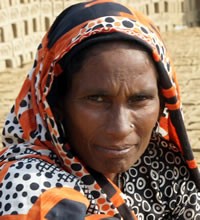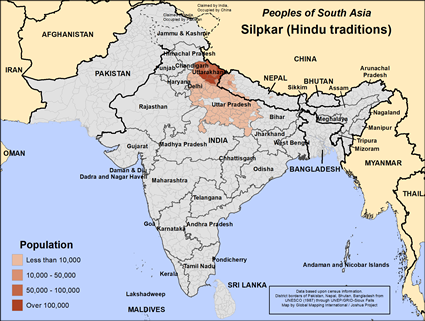The name Silpkar is generally used for the communities categorized lowly and residing in the hilly areas of Uttar Pradesh. The Silpkar are also known as Dom, Dum, Ram, Arya and Harijan. The Silpkar belong to an aboriginal people, and it is said that they were reduced to a state of slavery by the Khasia and later by the immigrant high castes in the historical past.
The Silpkar are divided into different hierarchically arranged groups based on their hereditary occupations. The first group is referred to as Mistri, which includes Lohar, Tamta and Orh, etc. The second group includes drummers such as the Dhobi, Damai and Bajgi. The third group includes serfs, vagrants and beggars.
Various occupational groups of the Silpkar still pursue their traditional hereditary occupations such as black smithy, copper smithy, basketry, masonry, oil-pressing, drum-beating and leather-work, etc. They also engaged in agriculture and animal husbandry, manufacture agricultural implements, making baskets and household utensils, etc. Their staple cereals are wheat, rice and maize.
They will intermarry with groups that have the same status. Adult marriage is the norm through negotiation. They cremate the dead, and the death pollution is observed.
Some of their deities are Bhairon, Betal, Kalchhin, Kalua, Chhurmall and Gangnath, etc. These deities are worshipped as family, village and regional deities.
The Silpkar people need to put their hope in the King of kings, realizing that he is the one who provides protection, hope and dignity to all who call on his name.
For the Holy Spirit to pursue their leaders until they open the community gates to the gospel.
Pray for loving and dedicated workers to go to them.
Pray for good educational facilities, rehabilitation and vocational training.
Pray for health problems such as color-blindness may be healed.
Scripture Prayers for the Silpkar (Hindu traditions) in Nepal.
India Missions Association - Edited by Philipose Vaidyar, Copyrighted © Used with permission
| Profile Source: Joshua Project |












